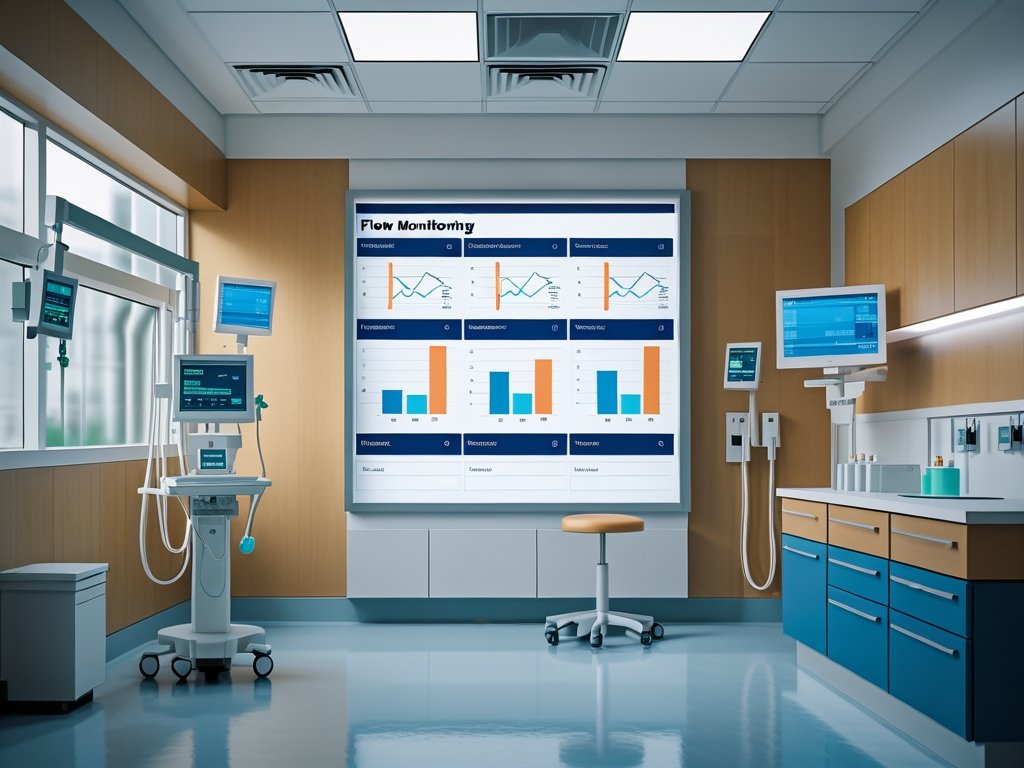Flow monitoring is often visualized through complex dashboards teeming with charts and logs – colorful graphs depicting throughput, latency, error rates, and endless streams of textual data detailing every transaction. This approach, while powerful for in-depth analysis by dedicated operations teams, can be overwhelming and inaccessible to many stakeholders. It creates a barrier between understanding system health and the people who need that understanding most: developers focused on feature velocity, product managers tracking user experience, and even end users experiencing issues. The assumption that effective flow monitoring inherently requires intricate visual representations or detailed logging is simply incorrect, and often leads to delayed issue detection and reactive troubleshooting.
The core principle of flow monitoring isn’t about collecting more data; it’s about understanding the movement of value through your system. It’s about knowing if things are flowing smoothly, encountering bottlenecks, or grinding to a halt. This can be achieved using surprisingly simple techniques that focus on direct observation and feedback loops, bypassing the need for extensive instrumentation and analysis tools. These methods often rely on leveraging existing infrastructure, utilizing readily available metrics in unconventional ways, and prioritizing signals over raw data. They emphasize proactive awareness built into the development workflow rather than reactive investigation after problems arise.
Observability Through Direct Feedback Loops
Traditional observability relies heavily on post-event analysis – examining logs and charts to understand what happened after something went wrong. This is valuable, but it’s inherently backward-looking. A more effective approach leverages direct feedback loops that provide immediate signals about the state of your system as value flows through it. Consider a simple example: automated acceptance tests. These aren’t just quality checks; they are real-time indicators of flow. If tests consistently pass, you know the core functionality is flowing smoothly. A failing test immediately flags a blockage – a broken feature, a database issue, or an infrastructure problem. This provides instant feedback without needing to pore over logs.
This concept extends beyond testing. Feature flags act as powerful flow controls and monitoring points. By observing how quickly features are being rolled out (and subsequently used) you gain insight into user adoption rates and potential problems with new functionality. Similarly, canary deployments allow you to monitor the impact of changes on a small subset of users before wider release, providing early warning signs of performance regressions or unexpected behavior. The key is to build these feedback loops directly into your development process—to make flow visibility an inherent part of how you operate.
These methods are often less about quantifying precise metrics and more about qualitative assessment. Are tests passing? Is the feature flag being used as expected? Is the canary deployment showing no errors? These simple questions provide valuable insights that can prevent problems before they escalate, all without needing to build complex monitoring infrastructure. It’s a shift from reactive problem solving to proactive flow management.
Leveraging Existing Infrastructure & Metrics
Many systems already collect metrics that can be repurposed for flow monitoring purposes – even if those metrics weren’t originally intended for that purpose. For example, HTTP status codes are often treated as simple indicators of success or failure. But they can also reveal bottlenecks in the system. A high number of 503 (Service Unavailable) errors indicates a capacity issue, while frequent 429 (Too Many Requests) errors suggest rate limiting problems. These aren’t necessarily flow metrics in the traditional sense, but they are indicators of impedance to flow.
Similarly, database query times can be monitored not for their absolute values, but for changes in those values. A sudden spike in query time suggests a potential performance issue that is slowing down the overall system. The same principle applies to external API response times. By focusing on deviations from baseline behavior rather than precise measurements, you can identify problems quickly and efficiently. This approach also minimizes the need for extensive instrumentation – you’re simply repurposing data that already exists.
The power of this lies in recognizing that any metric that affects user experience or system performance can be used as a flow indicator. It’s about thinking creatively and looking beyond traditional monitoring tools to identify signals within your existing infrastructure. The focus shifts from “what is happening?” to “is anything different than expected?”. You could even track fluid response without devices or apps to gain insight.
Identifying Critical Paths & Key Indicators
To effectively monitor flow without charts and logs, you need to first identify the critical paths through your system – the sequences of operations that are essential for delivering value to users. This might involve tracing a user’s request from the front end, through various services, and ultimately to the database. Once these critical paths are defined, you can focus on monitoring key indicators along those paths. These indicators shouldn’t be exhaustive; they should represent the vital signs of flow – the metrics that signal whether things are moving smoothly or encountering problems.
These key indicators could include: – Number of active requests in a queue – Time spent waiting for external services – Error rates at each stage of the pipeline – Latency of critical database queries – Success rate of background jobs. The selection of these indicators should be driven by a deep understanding of your system architecture and the potential points of failure.
Using Synthetic Transactions & Heartbeats
Synthetic transactions are automated requests that simulate user behavior, allowing you to proactively monitor the health of your system. These aren’t real user interactions; they’re controlled tests that provide continuous feedback on performance and availability. For example, a synthetic transaction might simulate a user logging in, searching for an item, and adding it to their cart. By monitoring the success rate and response time of these transactions, you can quickly identify problems before users are affected.
Heartbeats are similar, but simpler. They’re periodic signals that indicate a service is still running and responsive. A missing heartbeat suggests a potential outage or failure. These synthetic checks provide early warning signs of issues without relying on real user data – which can be noisy and difficult to interpret. The beauty of these methods is their simplicity: they are easy to implement, require minimal resources, and provide immediate feedback on system health.
Alerting Based on Behavioral Changes, Not Just Thresholds
Traditional alerting systems often rely on fixed thresholds – for example, triggering an alert if CPU usage exceeds 90%. This approach can generate false positives and miss subtle issues that fall below the threshold. A more effective approach is to alert based on behavioral changes. For instance, instead of alerting when CPU usage exceeds 90%, you could alert when CPU usage increases by 20% within a five-minute period.
This focuses on anomalies – deviations from expected behavior – which are often more indicative of problems than absolute values. It requires establishing baselines for key metrics and monitoring for significant changes. This can be achieved using simple statistical techniques, such as moving averages or standard deviations. The goal is to identify unusual patterns that might indicate a problem, even if the metric itself remains within acceptable limits. By focusing on behavioral changes, you can reduce false positives and improve the accuracy of your alerting system – all without needing complex charts or logs. Consider incorporating evening flow stabilization habits into your routine.





















